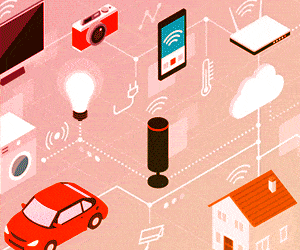The applications of this amplifier design are extensive and varied, suitable for both home and professional environments.

Class-D amplifiers are a breakthrough in audio technology, celebrated for their high efficiency and power handling. By converting input signals into high-frequency pulses, they minimize energy loss and heat production. This efficiency is ideal for applications demanding durable performance without the bulk and overheating typical of other amplifiers. Consequently, Class-D amplifiers are favored in a range of uses, from consumer electronics like home theaters and personal audio devices to professional setups such as concert sound and public address systems. They are also essential in compact, energy-efficient automotive and portable audio systems.
The EPC9192 evaluation board by EPC serves as a comprehensive reference design tailored for an analog input, two-channel Class D audio amplifier, each channel capable of delivering 700 W at 4 Ω. This board showcases a ground-referenced, split dual supply Single-Ended (SE) configuration that leverages EPC’s 200 V, EPC2307 eGaN® FETs arranged in a half-bridge topology. Additionally, the design permits a configuration in Bridge-Tied-Load (BTL) mode, effectively doubling the output to 1400 W at 8 Ω.
The design’s modular nature underscores its scalability and adaptability. It comprises a motherboard that incorporates two PWM modulators and two half-bridge power stage daughterboards. This setup configures the board as a dual-channel amplifier, complete with necessary housekeeping supplies and protective features. The PWM modulator is customizable, supporting various modulation techniques and the ability to modify the switching frequency. The power stage is similarly versatile, facilitating the evaluation and comparative analysis of different devices.
The kit version includes two EPC9558L PWM modulator boards. These boards feature an asynchronous switching, self-oscillating PWM modulator design with Post-Filter FeedBack (PFFB), where feedback is captured post the L-C low pass filter. The switching frequency is preset at approximately 600 kHz. The kit also includes the EPC9558P power stage, which integrates two EPC2307 eGaN FETs, characterized by their 200 V, 10 mΩ QFN package, and is driven by the Onsemi NCP51820 gate driver.
It comprises one EPC9192 motherboard along with two of each, EPC9558L PWM modulator and EPC9558P power stage daughterboards. Key features of this amplifier design include an output of 700 W at 2-4 Ω or 350 W at 8 Ω per channel. When configured in BTL mode, the system can handle 1400 W at 4-8 Ω, exceeding 100 VRMS. It achieves less than 0.005% THD+N and more than 120 dB SNR, with a frequency response ranging from 5 Hz to 20 kHz with a deviation of +/- 0.5 dB. Safety features include overcurrent, overtemperature, under-voltage protection (UVP), and over-voltage protection (OVP).
In home audio, it can function as a multi-channel home amplifier, HiFi stereo amplifier, or a subwoofer. For professional audio, it serves in capacities such as a multi-channel commercial amplifier, professional touring amplifier, active speaker, portable speaker, subwoofer, or a constant voltage amplifier. Additionally, it’s also ideal for transportation audio systems, enhancing audio setups in cars, boats, and ATVs.
EPC has tested this reference design. It comes with a Bill of Material (BOM), schematics, etc. You can find additional data about the reference design on the company’s website. To read more about this reference design, click here.






